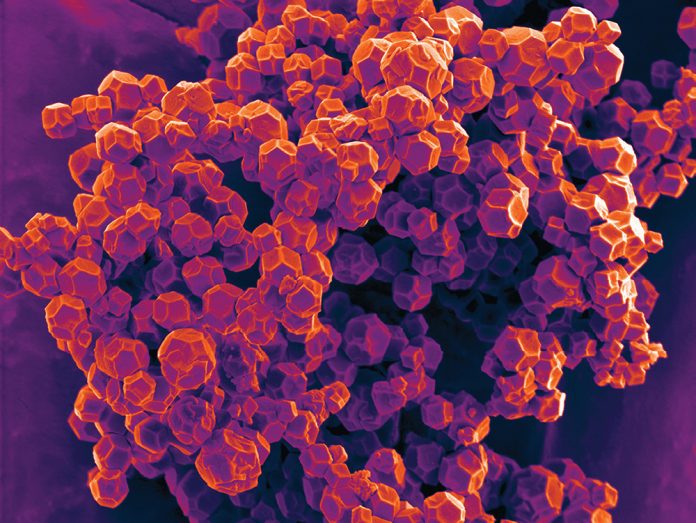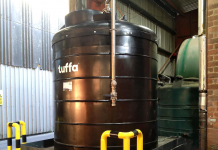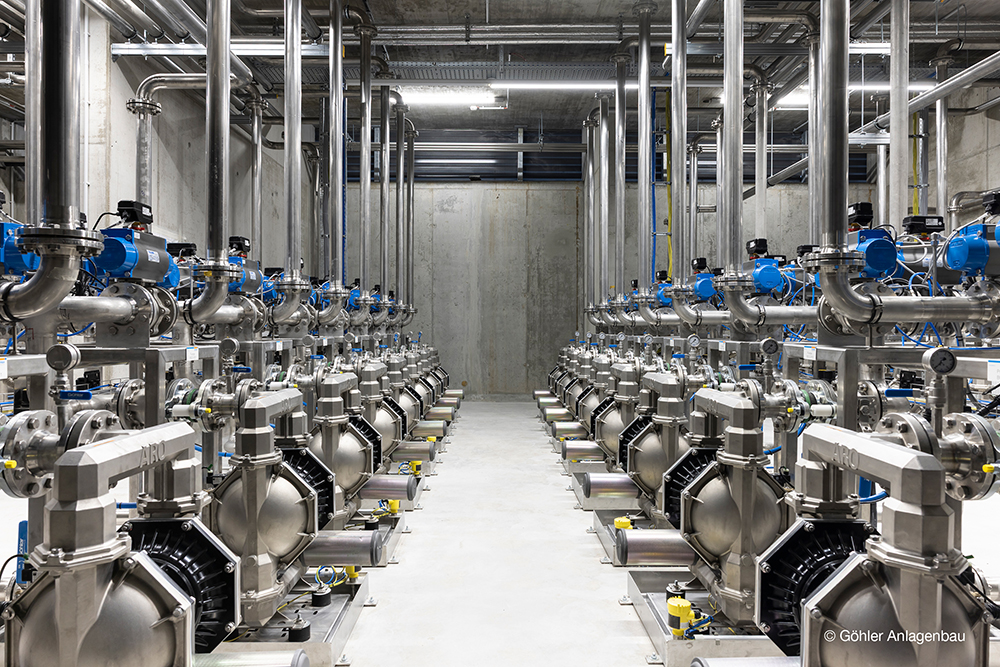Immaterial, a climate tech company headquartered in Cambridge, UK, has recently reached a significant milestone with the successful conclusion of its Series A funding round, led by SLB. Their mission is clear: to enable the energy transition by developing adsorption-based carbon capture and hydrogen storage solutions, using their unique, proprietary advanced adsorbent materials called monolithic metal-organic frameworks (m-MOFs). Their motivation stems from the urgent need to address two critical aspects of our sustainable future: capturing the hardest-to-abate industrial carbon emissions and unlocking hydrogen’s potential as a clean energy source.
The importance of carbon capture
Carbon capture has become a critical technology to reach the global net zero goals by 2050.1 This is particularly the case for hard-to-abate industries, where viable decarbonisation options are scarce. In these industries, the continuation of carbon production is an unavoidable reality throughout the transition period. Notable examples include processes like fluid catalytic cracking in refineries, the production of blue hydrogen, and cement manufacturing.
According to a recent McKinsey analysis, to achieve the net zero goals, the adoption of carbon capture, utilisation and storage (CCUS) must grow 120 times by 2050. This means capturing at least 4.2 gigatons per annum (GTPA) of carbon, potentially reaching 6.0 to 10.0 GTPA. CCUS could decarbonise 45% of the remaining emissions in the industry sector. Even in conservative scenarios, CCUS demand would reach approximately two GTPA by 2050, representing a 60-fold increase compared to the current landscape.
The significance and potential of CCUS are now being recognised by governments worldwide, exemplified by the US Inflation Reduction Act (IRA) or the EU allowances, which financially encourage carbon abatement. This initiative has the capacity to expedite the adoption of CCUS technology and support the scaling of CCUS facilities.
Immaterial’s approach
In contrast to the predominant amine technology, which currently stands as the most mature method, Immaterial’s m-MOFs-based carbon capture technology presents a host of improvements. The incumbent amine technology carries a substantial CAPEX burden, high energy demands leading to elevated OPEX, and challenges pertaining to implementation, toxicity, and safety.
Immaterial leverages the versatility of metal-organic frameworks (MOFs), a family of highly porous materials resulting from the interconnection of metal ions or clusters through organic molecules. With over 100,000 distinct structures, MOFs symbolise the beauty of porous coordination polymers and the possibility of modifying their individual chemical and physical properties. For instance, the choice of metal and organic ligand will decide the thermal and chemical stability but also the structural geometry and porosity of the material. The resulting high surface area (as high as 7800 m2/g) is key to adsorbing high amounts of a target gas – such as carbon and hydrogen. While significant R&D has maximised MOFs’ adsorption capacity per kilogram of material, the final density of synthesised materials and, therefore, the adsorption capacity per cubic meter is far from the ideal, or maximum, capacities proposed in the past. Even less so when shaping MOFs into pellets for industrial purposes.
Indeed, MOFs have been traditionally synthesised as powders, posing handling challenges within industrial contexts. Attempts to shape powdered MOFs into pellets by applying a pelletisation pressure or by adding chemical binders have often compromised their final performance, either by collapsing the materials’ pores when the mechanical pressure is too high or impeding kinetic processes. This process inevitably reduces the material’s density and leads to MOFs with less-than-optimal volumetric capacities. Other MOF-shaping methods, such as 3D printing, foaming, chemical vapor deposition onto thin films, and the use of supports like cordierite or activated carbons, have also resulted in low-density MOF products. This highlights the crucial importance of combining high adsorbent capacity and density as well as mechanical durability in the shaping process. Immaterial’s innovation lies in the direct production of MOFs as dense, macroscopic crystals that achieve the material’s maximum density and volumetric capacity, while preserving the underlying performance and enhancing their mechanical robustness. Prof. David Fairen-Jimenez, Immaterial’s CSO and co-founder termed these large crystals of MOFs monolithic MOFs or m-MOFs.2
By integrating the high-volumetric capacity of m-MOFs into conventional adsorption technologies (pressure/temperature swing adsorption), Immaterial presents a readily retrofitted solution that captures substantial carbon volumes within the smallest spatial footprint. Importantly, this approach consumes only a fraction of the energy demanded by amine-based processes, all while obviating effluent release and additional emissions.
In effect, Immaterial dramatically curtails both CAPEX and OPEX associated with carbon capture. This achievement renders their solution the most cost-effective option within the industry for cost-to-capture carbon, enabling hard-to-abate sectors to convert their investments, such as the IRA or EU allowances, into profitable ventures. This breakthrough enables the widespread adoption of carbon capture technologies, by making the transition to a low-carbon future not only financially viable, but also desirable.
Unleashing hydrogen’s potential
The global energy landscape is evolving, with hydrogen emerging as a key player. It is becoming an essential energy source for heating, long-distance transportation, and more.3 However, the efficient and affordable intermittent storage of hydrogen presents a significant challenge.
Currently, hydrogen is stored in various forms, each with its own limitations, including gas (at high pressures, up to 700 bar), liquid (at approximately 20 K), or chemically bound to liquid organic carriers like ammonia, or solid materials like metal hydrides. These storage methods require high energy input, elaborate heat management, present slow kinetics, and high desorption temperatures.
Despite its high energy density per unit of mass, hydrogen’s low density at ambient temperature and pressure implies a low amount of energy storage per unit of volume. The development of hydrogen storage methods that can increase energy density is, therefore, of paramount importance for the energy transition.
Immaterial’s m-MOFs precisely address this limitation: their remarkable density enables the storage of an unprecedented volume of hydrogen within a compact space (up to 60g/L), utilising lower pressures and temperatures already compatible with existing hydrogen production facilities. Furthermore, the reduced pressure demands not only enhance safety but also contribute to cost savings in tank materials. In sum, the overarching techno-economic analysis indicates a reduction in both CAPEX and OPEX, effectively alleviating a pivotal challenge within the hydrogen economy’s value chain.
What the series A means for Immaterial
The recent Series A funding enables the company to scale its growth plans with support from investors with access to use cases and market applications to roll out the technologies. It will allow them to build a manufacturing demonstration plant and have the ability to supply multi-tonnes into demonstrator projects for customers.
References:
1. CO2 Capture and Utilisation, International Energy Agency, www.iea.org/energy-system/carbon-capture-utilisation-and-storage/co2-capture-and-utilisation
2. Tian, T., Zeng, Z., Vulpe, D. et al. A sol–gel monolithic metal–organic framework with enhanced methane uptake. Nat. Mater. 17, 174–179 (2018).
https://doi.org/10.1038/nmat5050
3. Hydrogen, International Energy Agency,
www.iea.org/energy-system/low-emission-fuels/hydrogen










